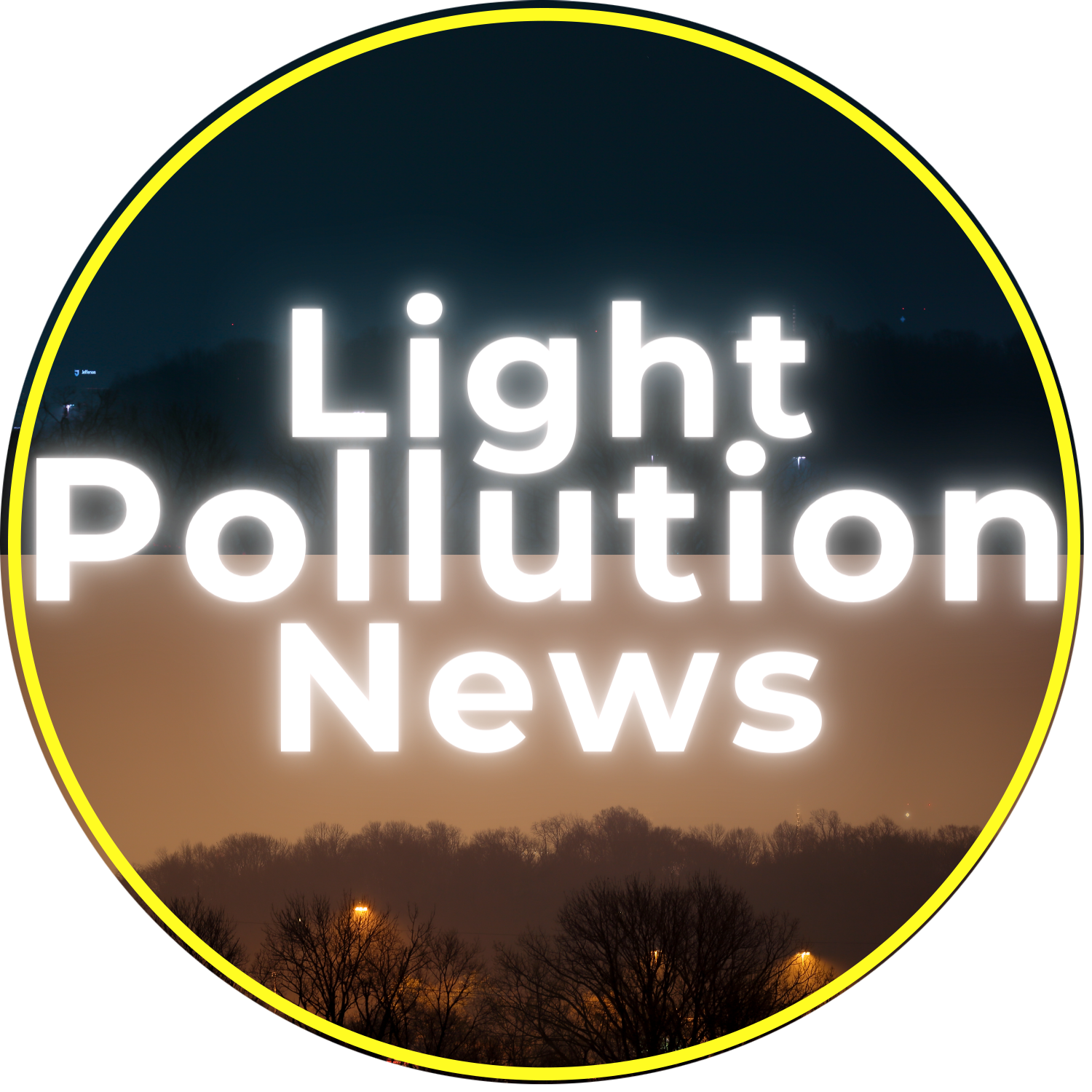
April 2025: Typewriters and Candlesnuff, Light Pollution News.
Join our mailing list. Follow us at LinkedIn, Instagram, Facebook, & Tiktok.
This Episode:
Today, are e-ink outdoor displays the wave of the future? More proof that shielded street lights do more than just keep the light out of your bedroom! And have you ever wanted to stargaze but live in a bright night city, hogwash, we help you find something great to look at tonight!
This month, we welcome back author and travel writer, Stephanie Vermillion; Dark Sky Ohio’s Traci Cardinal, and the Actual Astronomy Podcast’s Shane Ludtke!
Like What You See and Hear? Consider Supporting the Show.
A hearty thank you to all of our paid supporters out there. You make this show possible.
For only the cost of one coffee each month you can help us to continue to grow. That’s $3 a month. If you like what we’re doing, if you think this adds value in any way, why not say thank you by becoming a supporter!
Why Support Light Pollution News?
- Receive quarterly invites to join as a live audience member for recordings with special Q&A sessions post recording with guests.
- Receive all of the news for that month via a special Supporter monthly mailer.
- The satisfaction that your support helps further critical discourse on this topic.
Support Light Pollution News!
Host:

Guests:



Stephanie Vermillion
Stephanie Vermillion is a Cleveland-based travel journalist and photographer. She covers astrotourism, adventure, culture, and conservation for publications like Outside Magazine, National Geographic, Travel & Leisure, and Vogue. She’s the author of National Geographic’s 100 Nights of a Lifetime: The World’s Ultimate Adventures After Dark, and an astrotourism columnist for Outside.
Traci Cardinal
Traci Cardinal is the president of Dark Sky Ohio, a position she has held after dedicating over four years of volunteer service to the organization. During her time with Dark Sky Ohio, Traci has played a crucial role in developing lighting ordinances for several cities and counties across Ohio, helping preserve the night sky’s beauty. She has also been actively involved in dark sky outreach programs, engaging with schools, colleges, and community events to raise awareness about light pollution and its environmental impact.
In addition to her advocacy work, Traci is a skilled physician associate specializing in spine surgery. She holds a Master’s of Medical Science from Emory University, combining her expertise in healthcare with a passion for making a positive impact in her community.
Shane Ludtke
Shane Ludtke has had a lifelong interest in astronomy. His first view of Saturn through a telescope at age 9 established his love of the night sky. Shane became an active astronomer in 2003 after purchasing an 8” Dobsonian telescope. Shane loves to observe all objects in the sky and uses telescopes ranging from 25mm to 300mm aperture. Shane is an active member of the local astronomy club and has held numerous positions including President. Shane and his long-time observing friend, Chris Beckett, began the Actual Astronomy podcast in 2020 and continue to release 2 episodes weekly that focus on visual observing.
Full Article List:
- World Becomes Brighter as Trump Reverses Biden’s Incandescent Light Bulb Ban, Leslie Eastman, Legal Insurrection.
- E Ink’s color ePaper tech gets supersized for outdoor displays, Paul Ridden, New Atlas.
- Portsmouth Neighborhood Wins Light Pollution Battle with Tiverton Boatyard, Michael Rock, Fun107.
- While you sleep, these insects are working hard on the night shift to keep our environment healthy, Tanya Latty, The Conversation Africa.
- Shedding light on dark taxa: exploring a cryptic diversity of parasitoid wasps affected by artificial light at night, Scientific Reports.
- Light alters calling-song characteristics in crickets, Journal of Experimental Biology.
- It Pays to Sit Tight: Stable Night-Time Incubation Increases Hatching Success in Urban and Forest Great Tits, Parus major, Zoological Science.
- Blended-red lighting partially mitigates the cost of light pollution for arthropods, Oecologia.
- Come to the dark side – citizen science in nighttime ecology, BMC Ecology and Evolution.
- Marine artificial light at night: Implications and potential hazards for offshore songbird and bat movements in the Greater North Sea, Conservation Science and Practice.
- How You Can Still Stargaze Under Light Pollution, Tony Phillips, HowToGeek.
- How I created these images: Favourites of 2024 (Part III), Soumyadeep Mukherjee, DIYphotography.
- Northern Arizona men’s basketball gears up for ‘alternate identity’ game, JJ Post, ESPN.
Light Pollution News: April Highlights
Environmental Protection: Presidential Decree on Light Bulbs
President Trump has instructed Secretary Lee Zeldin to reinstate environmental orders, including what President Trump calls “common-sense standards” on lightbulbs, aiming to reverse changes made by the previous administration.
Innovative Technology: E-Ink for Outdoor Displays
New Atlas reports on the advancement of e-ink technology in 75-inch outdoor displays. These displays use significantly less power than LED billboards and offer improved readability in sunlight, reducing light pollution. Dark Sky International certified this technology in 2023.
Community Success: Portsmouth, Rhode Island Fights Light Pollution
Residents of Portsmouth, Rhode Island, successfully resolved a two-year conflict with Safe Harbor Boatyard over disruptive lighting after media coverage.
Ecology Spotlight: The Importance of Nocturnal Insects
The Conversation highlights the critical role of nocturnal insects like the leaf flower moth, fireflies, and lacewings in the ecosystem, emphasizing declining insect populations.
Research: Shielded Street Lights Reduce Wasp Attraction
A study from Scientific Reports demonstrates that shielded streetlights reduce the attraction of parasitoid wasps. Shielded LED streetlights with lower color temperatures (2000K-2700K) were compared against unshielded lighting.
Effects of Artificial Light on Cricket Sounds
Research in the Journal of Experimental Biology reveals that constant artificial light at night alters cricket chirps, leading to less complex sounds.
Insect Attraction: “Blended-Red” Streetlights
A study in Oecologia found that “blended-red” streetlights attract fewer insects than 3000K color temperature streetlights, supporting previous research.
Bird Incubation: Light Pollution Impact
Zoological Science published findings that artificial light at night affects bird incubation diligence, reducing hatching success. Additional articles on marine light pollution’s impact on birds and bats in the North Sea are available on LightPollutionNews.com.
Citizen Science: Monitoring Nocturnal Ecology
BMC Ecology and Evolution suggests using citizen science to raise awareness and gather data on nocturnal ecologies.
Stargazing Tips: Overcoming Light Pollution
How-To-Geek offers advice for stargazing in light-polluted areas, including using rooftops, light pollution filters, and magnification.
Policy: Dark and Quiet Skies Center Bill Fails
The bill introduced by Senator Hickenlooper and Mike Crapo to create a center of excellence for industry standards in protecting dark and quiet skies did not pass in 2024.
Nighttime Photography: Techniques and Inspiration
DIY Photography explores comet imaging, deepscape images, and Venus transit captures.
Unique Imagery: Northern Arizona University “Astrojacks” Jersey
Northern Arizona University’s new “Astrojacks” jersey features telescopes, a unique inclusion in sports-related imagery.
Light Pollution News: April Read Along
Show Transcript.
Ok, let’s jump into it!
Kicking off the second show for April, I’m sure you heard the news when it came out. I didn’t have a place to put it in the regular lineup, but I thought this might make for a nice warmup article.
From the soothing words of our dear president here in the United States, my friends:
It always makes me feel good when presidents are respectful to one another.
In the realm of technology, I have one article this month. It’s from New Atlas and it discusses bringing e ink technology to the big time via 75 inch outdoor displays. This technology boasts significantly less power draw than the LED billboards, signs, and what have you currently on the market. In addition, the messaging is easier to read with the daytime sun due to antiglare attributes…ie you don’t have to jack up the power source to a brightness of 11.
There is an added bonus of this technology, it is significantly less impactful on the nighttime ecosystem, of which we humans are a part, as well. It even caught the eye of Dark Sky International which certified it in 2023.
If you’re not familiar with e ink technology, or you’re not aware of how it works, it generally relies on surrounding ambient light (for which in cities given that we all have new blindingly bright streetlights in place, it would surely have plenty of).
Now we spoke about this technology a long time ago on this show. E ink technology was being sold as new digital license plates. While this technology won’t replace the new multistory big LED screen that every ballpark has, maybe it can be a safer alternative to some of the digital highway signage we are seeing now.
Here’s a piece of good news for your April! Traci, you will undoubtedly appreciate this!
Residents in Portsmouth, Rhode Island were able to overcome a two year battle over hideously unneighborly lighting by the Safe Harbor Boatyard. According to the local radio station, Fun107, the business sitting across the water “lit up 18 homes as if it were midday!”
Community members attempted to connect with the marina but the owners and management shockingly never returned their calls or were strangely absent. That was until the radio station, Fun107 published an article on February 10th detailing the plight of the community. Within a day of that article going live, the boatyard turned off the lights.
Kicking off ecology this month, there was this great article in the Conversation that looked at how important nocturnal insects are to the world. For instance, the article cited the importance of the tiny leaf flower moth to nocturnally pollinate over 500 species of tropical flower trees across three continents and Oceana.
Then, there’s one of my favorite spring traditions – fireflies, whom, when adults, spend their time cutting down the snail population. There are also flying insects known as lacewings that feed on aphids and mealybugs.
However, in rather dramatic time, we’ve witnessed astounding population declines. Whereas in as recent as the 2000 Sydney Olympics, authors claim that famous moth swarms have become all but unheard of. The Australian Christmas beetle, so named since it regularly arrived on the scene around Christmas, has too become a victim in our current insect apocalypse.
In a similar vein, a study from Scientific Reports provides further evidence of the benefit of shielding street lights! The study looked at how street lights affected parasitoid wasps, that is wasps that prey on other insects in an effort of population control.
The researchers compared shielded LED street lights of 4000K white color temperature, 2700K warm color temperature, and 2000 amber color temperature against unshielded 4000K LED lighting and unshielded 2000K temperature high pressure sodium lighting. They sampled results over the course of 55 nights spanning 2 years and found that shielded lamps reduced the wasp attraction.
Continuing with insects, researchers in the Journal of Experimental Biology found that artificial light at night, namely always on lighting, changes the sounds crickets make. In a natural environment void of artificial light at night, crickets made longer and more nuanced chirps when compared with crickets in a constant light environment.
My final article on insects this month comes from Oecologia, whereby it was found that a “blended-red” streetlight collects fewer insects than a 3000K color temperature street light. Seems in line with other research we’ve spoken about on this show.
Well, as you the listener at home are probably aware, those of us here in the Northern Hemisphere are now well into the throngs of the spring bird migration. And I have yet another research article that discusses how birds are affected by artificial light at night. As we have seen in past shows, whereby light influences how birds decide where to rest up, and light also imparts cognition challenges on some bird species; from Zoological Science, it’s found that artificial light at night also affects how diligently a bird incubates an egg overnight.
And that increased restlessness when incubating results in an estimated 60% reduction of hatching success. Something to keep in mind this migration season.
I will note that over on our ecology page at LightPollutionNews.com, you’ll be able to find many additional articles this month, but one of them is from Conservation Science and Practice, discussing the impacts of marine light pollution on birds and bats in the North Sea – very much worth the read.
We had an article this month from BMC Ecology and Evolution that suggested utilizing citizen science as a way to draw awareness and collect much needed data on nocturnal related ecologies.
Shane, here’s something that I think you’re very familiar with.
How-To-Geek published a recent article titled ‘How You Can Still Stargaze Under Light Pollution.” The author Tony Phillips suggests the following for city dwellers, like myself.
First, it pays to be up high, so if you can secure a rooftop or find a hilltop somewhere, you’ll be able to be above much of the dense light pollution from the get go. He goes on to mention visual light pollution filters and digital light pollution filters.
Now here, I can still see the Orion nebula under magnification. Star clusters aren’t as rich, and good luck trying to find anything moderately faint, but, as a quick side plug for the Astronomical League, to which I am a regional representative, you can knock out a very fun asterisms list in dense light pollution provided you have more magnification than you really would need otherwise.
And that’s not the only threat to astronomy – rocket reentry creates what are called “ionospheric holes,” as past guest Stephen Hummel stated in a recent SpaceNews article, “When I saw my first ionospheric hole, I thought, ‘Ok, aliens are real.’
The effect creates a luminous red glow as the burns interact with the ionosphere.
You may recall me talking about an effort to create a center of excellence to create industry standards for protecting dark and quiet skies. Well, that bill introduced by Senator Hickenlooper of Colorado and Mike Crapo of Idaho hit the trashcan in 2024.
I have one last astronomy related piece here, and that derives from DIY Photography on how the author Mukherjee created three different styles of nighttime photography. This itself is worth the read for anyone into this sort of thing.
The first piece that Mukherjee discusses is a straight up comet image – requiring stacking software like PixInsight or Siril. Next, he goes on to talk about deepscape images – which if you’re not aware is the more artistic side of nighttime photography which overexaggerates night sky objects in the sky to have them sit at a much more imaginative proportion in the sky above – think mega galaxy over a mountain. Then, lastly, he talks about something that I think may be the most interesting of all three – a side by side capture of Venus as it went from setting at sunset to rising before sunrise – thereby providing the impression of Venus flowing into the rich Milky Way.
To close up tonight, as we record this, we’re in the throngs of March Madness, but I know you the listener won’t get this until the champion has been crowned.
Northern Arizona University debuted a new, ‘alternate identity’ jersey. As seems to be the trend across all sports these days, teams like to temporarily rebrand themselves in hopes of selling new jerseys.
Well, NAU’s new one moves away from their regular ‘Lumberjacks’ uni, to become the “Astrojacks!” And the photo shoot with this will make any stargazer-sports fan nerd out.
Sitting behind the player-models wearing the three tone blue jerseys, are multiple telescopes – one Celestron 8”, a Meade –god rest their soul– 6”, and another Celestron 8” reflector. Perhaps the only time in history when a telescope made it into a sports related photoshoot.

